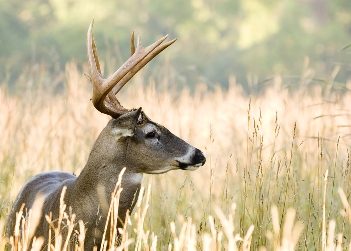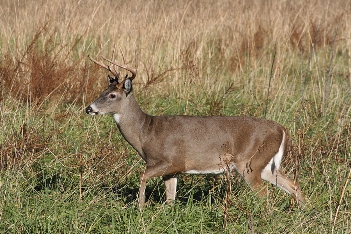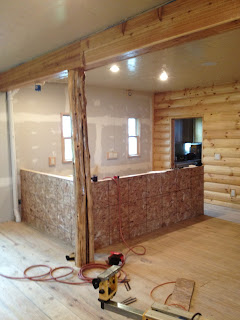NEWS RELEASE
For Immediate Release
April 25, 2012
For more information contact
Sara Otte Coleman, Director, Tourism Division
North Dakota Department of Commerce
701-328-2525
NDtourism.com
Tourism leaders honored with Governor’s Travel and Tourism awards
Outstanding leaders in North Dakota’s tourism industry were recognized today at the 2012 North Dakota Travel Conference in Bismarck. Gov. Jack Dalrymple and North Dakota Commerce Commissioner Al Anderson presented nine Governor’s Travel and Tourism awards.
“North Dakota’s tourism industry is an important contributor to our strong economy and a big reason why our state is the envy of the nation,” Gov. Dalrymple said. “Today’s award recipients represent the outstanding work that is occurring across the state to grow North Dakota’s tourism industry and provide visitors with a legendary experience.”
Awards were given to:
Fargo Moorhead Convention & Visitors Bureau (FM CVB), Tourism Organization of the Year. The Fargo-Moorhead Convention & Visitors Bureau had a great year in 2011, achieving industry accreditation, hosting several major events and launching marketing initiatives to promote Fargo-Moorhead and North Dakota to the world. FM CVB’s completion of the Destination Marketing Accreditation Program (DMAP) was the first for a destination marketing organization in the tri-state area of N.D., Minn., and S.D. Last year, the FM CVB played a vital role in bringing thousands of visitors to the area by attracting major events like the Pyrotechnics Guild International, USA Curling Nationals, The Fargo Airsho, Squirt International Hockey, Rumble on the Red, USA Wrestling, the American Legion World Series and the 20th Discrete Simulation of Fluid Dynamics Conference, which was last hosted in Rome. FM CVB’s innovative marketing efforts increased walk-in traffic to the visitor center by 30 percent in 2011. More than 30,000 travelers stopped by the visitor center last year, an increase of nearly 9,000 over 2010.
Kyle Blanchfield, Woodland Resort, Travel and Tourism Industry Leader. Blanchfield has been involved with the tourism industry as an advocate of and tourism operator in North Dakota’s outdoor recreation for more than 20 years. As the owner of Woodland Resort on the shores of the ever-expanding Devils Lake, Blanchfield has had to move his resort twice. But he hasn’t given up; he just keeps expanding his resort. Most recently, Blanchfield built an 80-slip marina to accommodate anglers and local boaters, and he continually maintains his beach shoreline, which is the only swimming beach on the lake. To give anglers and hunters a one-stop-shop for their vacation, Blanchfield accommodates two local guiding services and books their services with lodging accommodations. A constant advocate for North Dakota’s tourism industry and outdoor recreation, Blanchfield regularly contributes local fishing reports. In addition, he maintains a continuous marketing presence by supporting local and state efforts, and stays abreast of legislative issues that impact tourism.
Peggy Rixen-Kuntz, Dickinson Convention & Visitors Bureau (CVB), Front-Line Employee. Since the opening of the Dickinson CVB Visitors Center in 2001, Rixen-Kuntz has been a summer front-line employee, offering top-notch customer service to travelers visiting the area. Due to her enthusiasm and knowledge of the area, travelers who encounter Rixen-Kuntz often send notes to the CVB office sharing their positive experiences. She goes to great lengths to assist travelers, whether to inform them of the area’s attractions or, in some cases, to escort visitors around Dickinson.
Jennifer Morlock, Dakota Cyclery, Medora, International Tourism Award. Morlock, a 30-year owner of Dakota Cyclerly, has an in-depth knowledge of the Maah Daah Hey Trail and the experience it offers adventure travelers, especially mountain bikers. Because of her familiarity with the trail, Morlock is often asked to host international journalists and media representatives on guided mountain biking tours, exposing them to the vast and rugged North Dakota Badlands. Morlock, who has a passion for mountain biking and the North Dakota Badlands, has a keen understanding of what international travelers expect from adventure travel and delivers on that expectation. Her involvement in hosting media has resulted in international media coverage of North Dakota, which positively impacts the number of international visitors to the Badlands and the western part of the state.
Bobbi Clarke, Williston Convention & Visitors Bureau (CVB), Behind the Scenes Tourism Employee. Clarke joined the Williston CVB in 2008. Due to the small staff size at the CVB, she has assumed many roles ranging from visitor services, administrative assistant and book keeper to event coordinator, store manager, and house and grounds keeper. No matter the role, Clarke has done every one with respect, pride and dignity. During a time of great change for Williston, Clarke has been flexible in her role at the office and how it pertains to the greater good of the community.
Medora Musical, Medora, Attraction of the Year. Performed outdoors in the North Dakota Badlands, the Medora Musical enters its 48th summer season in 2012. The professionally-produced Broadway-style show honors Theodore Roosevelt and his time spent in the North Dakota Badlands, and showcases American patriotism, cowboys and horses, and western and gospel music. More than three million people have enjoyed this North Dakota tradition; a little more than half of them North Dakotans. The rest come from all over the U.S. and world. About 100,000 people see the show annually. It has been recognized by the Library of Congress as an “American Legacy Event” and the American Bus Association has named it a “Top 100 Event in America” on a nearly-annual basis.
Norsk Høstfest, Minot, Event of the Year. Celebrating its 35th anniversary this year, the Norsk Høstfest has become an internationally-known event drawing thousands of visitors annually to Minot and North Dakota. Each year, several thousand volunteers donate their time and talents to make the event happen. And last year, after the devastating Mouse River flood, was no different. In fact, the Norsk Høstfest was the first major event held after flood, thanks to the volunteers, many of whom were flood victims trying to rebuild their homes or helping friends rebuild their homes and lives. The outpouring of support to the Norsk Høstfest gave hope to the people of Minot by showing that recovery was under way and that tourism was still happening in the community. Norsk Høstfest features world-class entertainment, Scandinavian craftsmen and women, artists, dancers and delicious delicacies. More than 55,000 people from across the U.S., Canada and Scandinavia attend this five-day event.
Brian Mattson, Fargo-Moorhead Convention & Visitors Bureau (FM CVB), Wade Westin Award for Marketing. As one of the first in the state’s tourism industry to pursue social media, Mattson is a real innovator in destination marketing. Leveraging the 10th anniversary of the movie “Fargo,” he built a replica of the infamous woodchipper and later acquired the actual prop used in the movie to display in the Fargo-Moorhead Visitor Center. Coinciding with this effort, Mattson started a Facebook fan page for the “Woodchipper in Fargo,” which currently has more than 12,000 fans. Mattson shares his knowledge of social media by teaching classes and is active in the tourism industry statewide and nationally.
Rolling Plains Adventure on Black Leg Ranch Sterling, Best Package. Based on Black Leg Ranch near Sterling, one of North Dakota’s oldest operational ranches, Rolling Plains’ guides - and fifth-generation rancher/owners - help guests have a legendary North Dakota hunting experience. The hunting package includes a guided hunt, lodging in rustic pine cabins, target practice, home-cooked meals, airport pickup/drop-off and optional add-ons. In addition to hunting packages, Rolling Plains Adventures also offers ranch adventures like horseback riding, cattle drives, camping and branding.
“Every day our industry partners across the state share their passion for North Dakota with visitors from across the world,” said Anderson, commissioner of North Dakota Department of Commerce. “Their dedication and enthusiasm creates lasting memories for visitors and makes our tourism industry successful. Their hard work continues the legacy of legendary North Dakota.”













.JPG)





















